Case Studies
Industries
Resources
TikTok Collection
NEW
In this article we will define social commerce take a look at some social commerce examples, discuss the benefits of social commerce strategies, and examine some important social media platforms where you can find lots of social commerce examples.
Before we jump into our 16 social commerce examples, let’s break down the concept of social commerce. Social commerce is defined as a way to incorporate social media into the eCommerce experience to give shoppers real customer recommendations, created by real users, and provide customers with social proof when they’re choosing what to buy.
The recent explosion of social commerce is a stark reminder that shopping has always been a social experience. And given the wealth of opportunities brands have to score sales today, social feeds are quickly becoming the modern-day trip to the mall.

Just as shoppers want to share and show off their purchases, eCommerce brands are expected to provide a personalized, back-and-forth experience for shoppers. Considering 90% of U.S. marketers name Instagram as the most crucial social media platform for influencer marketing, there’s no denying the potential for social feeds to drive sales.
For example, Riviera Maison, a premium furniture brand, explains how they were able to effectively inspire potential customers through the use of their current customers’ social content in this case study. This kind of success is available to eCommerce brands willing to invest time and resources into social commerce.
Social commerce involves selling products or services directly through social media platforms, integrating shopping experiences seamlessly into users’ social interactions. It leverages the social networks’ features like user reviews, recommendations, and social sharing to drive sales. In contrast, eCommerce refers to online transactions conducted through dedicated websites or online marketplaces, focusing primarily on the transactional aspect without the same level of social integration. While eCommerce provides a wide range of products and structured shopping experiences, social commerce emphasizes personalized and socially-driven shopping journeys, often leveraging influencers and UGC to enhance the buying process.
Buyers are flocking to their favorite brands’ feeds en masse to make purchases. A recent study from Shopify, which analyzes well over 500,000 orders as a result of social traffic, gives us an insight into the booming state of social commerce. Some notable figures from the study include…
In short, the concept of social media as a black hole of marketing ROI is no longer valid. As eCommerce sales grow year-over-year, brands who understand the principles of social commerce will inevitably drive more sales than those who sleep on their social presence.
There’s no shortage of social strategies and platforms for brands to leverage to stay relevant. From the worlds of fashion and food to marketing and tech, there is no “default” approach to effective social commerce.
We’ve outlined sixteen awesome examples of top brands staking their claim via social commerce. Any combination of these trends, tips and strategies are fair game for those looking to make the most of their social feeds.
Brands should embrace social commerce for its wide reach, authentic User Generated Content, valuable data insights, and dynamic shopping experiences, all of which drive sales and foster deeper connections with customers. A social commerce strategy offers a myriad of benefits for brands, making it an essential component of modern marketing:
Overall, embracing social commerce enables brands to drive sales, build brand loyalty, and cultivate deeper connections with customers in today’s digital age.
Flowbox, proves invaluable in social commerce due to its ability to harness authentic content from users. By aggregating real-life product experiences, it offers a trustworthy perspective to potential buyers, fostering trust and credibility in the brand. Flowbox facilitates seamless integration of UGC across various social media platforms, enhancing brand visibility and engagement. Its analytics tools provide valuable insights into consumer behavior, aiding in targeted marketing strategies and ultimately driving conversions. In essence, Flowbox empowers brands to leverage consumer content effectively, thereby amplifying their presence and influence in the realm of social commerce.
Before we take a look at some social commerce examples, let’s delve into the platforms where we can see social commerce in action.
You’ll find a lot of social commerce examples on TikTok. TikTok’s rising popularity makes it an ideal platform for social commerce initiatives. Key functionalities include:
With its expansive user base and growing influence, TikTok presents exciting opportunities for brands to explore and leverage in their social commerce endeavors.
YouTube’s video-centric platform provides unique opportunities for brands to showcase products and engage with their audience. In fact, User Generated Content on YouTube is an extremely popular category. Key features include:
By incorporating YouTube into their social commerce strategy, brands can leverage the platform’s vast audience reach, visual storytelling capabilities, and interactive features to drive brand awareness, engagement, and conversions.
Instagram’s dynamic platform, with features like Instagram Shopping, empowers businesses to showcase products seamlessly. Here’s how:
Pinterest provides a visual discovery platform tailored for shopping experiences. Key features include:
With a vast user base, Facebook offers robust commerce capabilities. Here’s what you can do:
Now it’s time to take a look at some social commerce examples in action. These social commerce examples are packed with useful takeaways and points of inspiration. Check them out:
Social feeds should ideally give your followers a glimpse into a digital shop window. Rather than constantly blasting offers and deals, CLUSE’s Instagram represents a shining example of smart social shopping for eCommerce.
Beyond elegant imagery, CLUSE’s feed is full of User Generated Content to show off their products with a personal touch.
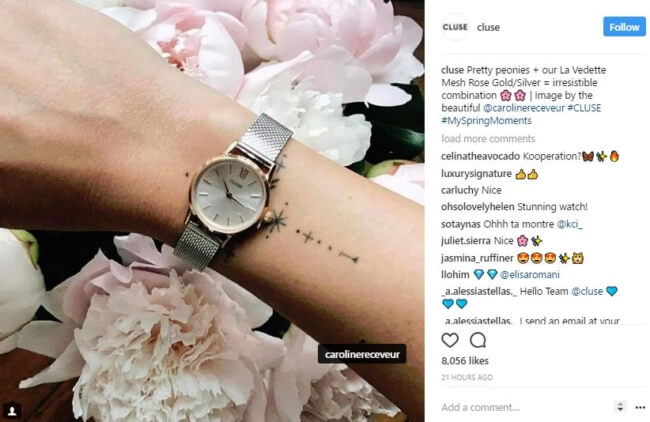
From hashtags and UGC to links funnelling followers back to your shop, turning fans into customers via Instagram requires brands to have all their bases covered. When each element of a social page comes together, your social presence becomes like a well-oiled machine that drives sales. Learn more about how to create a hashtag for your brand here.
Social selling is on the rise. The key takeaway for brands when examining this example is not to think of your Instagram account as just a requirement of having an online presence, look at it as a form of online shop.
Want to integrate stunning UGC in your webpages like CLUSE? Book a demo of the Flowbox platform to discover how.

Never underestimate the power of “free.”
As demonstrated by Sinless Beauty’s frequent giveaways, followers are happy to tag, share and retweet if it means they could get something in return. While some brands may be hesitant to hop on the giveaway bandwagon, there’s perhaps no easier way to vastly improve visibility with minimal effort.
Either way, giveaways are also an excellent way to test hashtags and understand which types of products are most relevant to your target audience.
Giveaways drive engagement and consumer interaction, and they are a powerful way to encourage consumers to create more UGC surrounding your brand.

Just as shoppers are making the bulk of their purchases via Facebook, they’re also consuming more video than ever on the platform. In fact, Facebook users will spend twice as long on a brand page with a video versus pages without them.
The takeaway here isn’t to solely confine yourself to video. Although video is often associated with educational and how-to content, luxury brands such as Burberry use bite-sized videos and Facebook Live to bring their products to life. Whether through micro-commercials or Vine-style videos, a bit of creativity can go a long way via video marketing.

The importance of UGC for social commerce can’t be overstated.
93% of shoppers note that UGC is helpful in making purchasing decisions. Brands such as Au Revoir Cinderella let their products speak for themselves versus trying to scream “buy me” at their followers.

By using your own followers and user-submitted photos as content, you’re able to display your products “in the wild” versus slapping them on a product page.
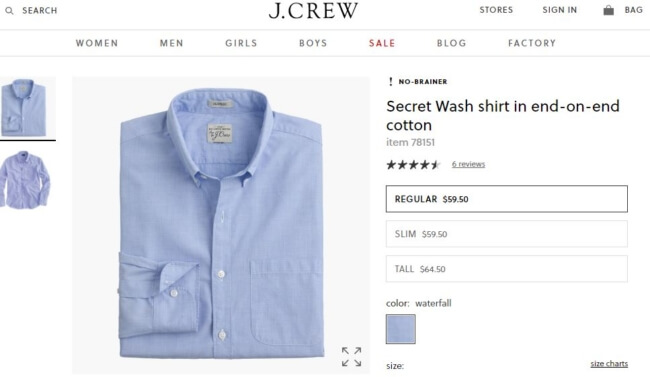
Not all aspects of social commerce are purely related to social media.
Remember: shopping represents a conversation. Brands should keep their ears open to the feedback of followers and customers alike. Doing so allows customers to essentially become more invested in the shopping experience.
For example, J. Crew puts their customer feedback front and center on each of its product pages.

The key tip here is that placing your customer’s opinions front and centre can help to speed up purchasing decisions and in turn encourage more consumer feedback. Given that 93% of consumers say online reviews have an impact on their purchase decision, there’s certainly value in giving your customers a voice and encouraging them to leave a review of your product.

Although today’s shoppers certainly aren’t afraid to spend, brands should do everything they can to build trust with their followers.
Social proof is an incredibly valuable marketing tool for any brand. In an eCommerce space crowded with competition, using the positive feedback of others represents a surefire way to both gain trust and set yourself apart from the pack.
For example, Dollar Shave Club has a Pinterest board dedicated to positive customer feedback and unboxing photos. This savvy combination of social proof and UGC is a double-whammy of brilliant social commerce in action.
Customers are the very best advocates. Social proof is a trust form of word-of-mouth marketing that reinforces the authenticity of your brand.

Just as shoppers strive for a unique shopping experience and recommendations in-store, the same rules apply to eCommerce. Considering that 31% of eCommerce sales come as the result of recommendations, personalizing the shopping experience for your customers is always a plus.
Sephora’s “Fragrance IQ” quiz is a prime example of personalized social commerce. The quiz covers a brief series of questions to help determine the ideal perfumes or colognes for the taker.
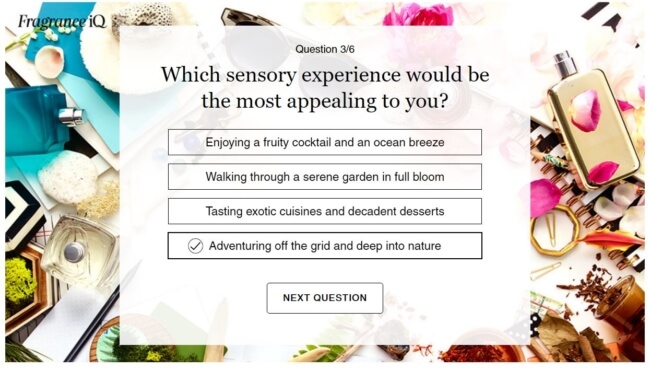
At the end of the quiz, products are recommended based on the results.

Quizzes are more than just a playful way to keep shoppers on the page. Not only do quizzes serve as tools to gather customer information, but also provide a personalized experience akin to a brick-and-mortar boutique.
Personalized shopping experiences are essential in eCommerce. This is a prime example of how brands can leverage personalized social commerce to cater to individual preferences, mirroring the importance of unique experiences and recommendations sought by shoppers both online and in-store, which ultimately drive sales.
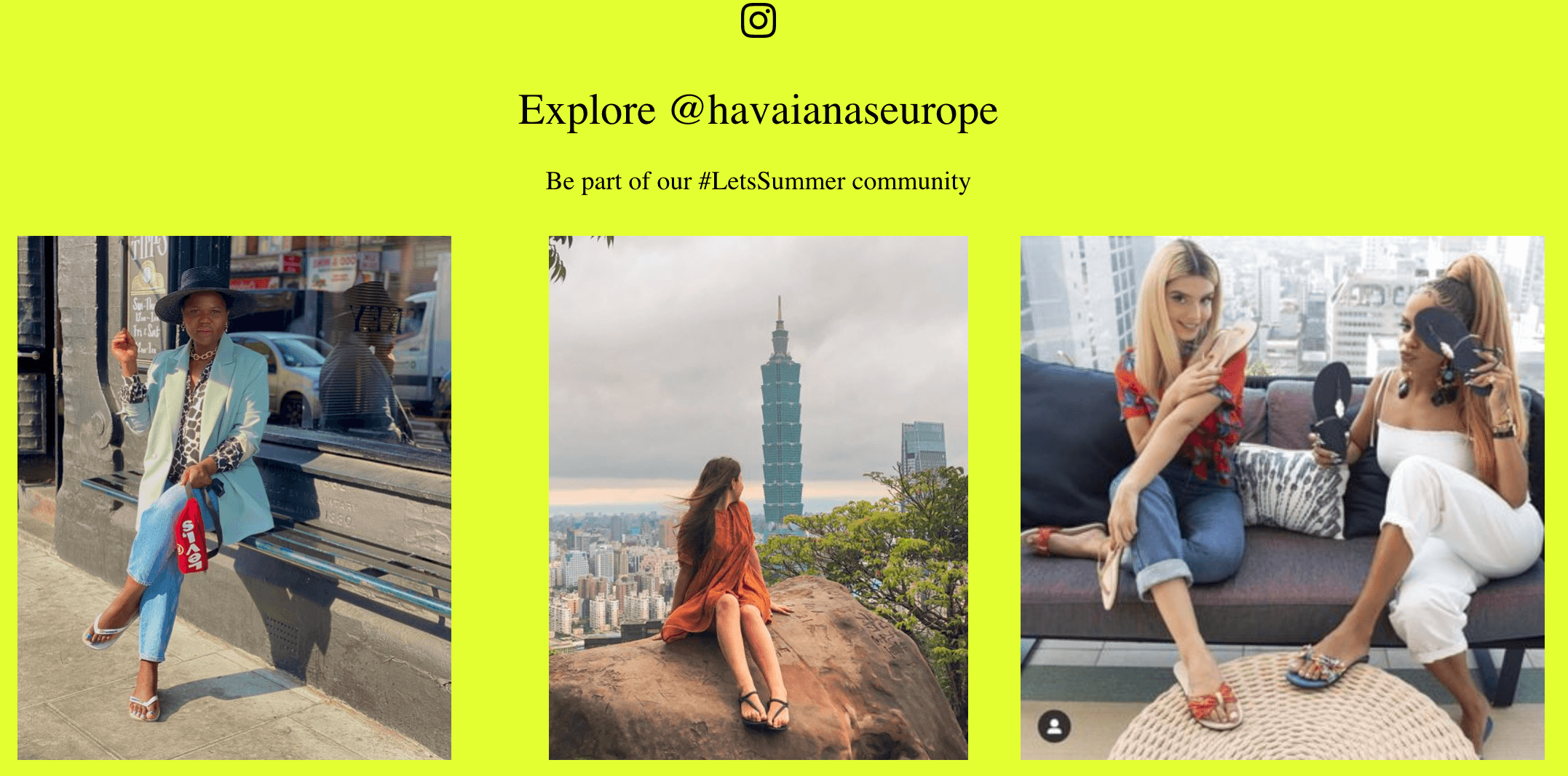
Social fans are practically begging to engage with brands. With 50% of shoppers looking for brands to tell them what sort of content to create, accepting user generated photos is a no-brainer for fashion brands in particular.
Lookbooks and shoppable Instagram feeds are the perfect mixture of curating UGC and turning customer content into conversions.
Not only do these social commerce strategies allow you to give your followers some direction, but it also provides a personal touch to your eCommerce storefront.
The key takeaway is that fashion brands can effectively engage with their audience by embracing consumer content from social media, leveraging strategies like lookbooks and shoppable Instagram feeds to not only guide followers but also personalize the eCommerce experience, meeting the demand for brands to provide content direction while converting customer contributions into sales.
As noted by Shopify’s previously-mentioned study, Facebook represents a potential cash cow for eCommerce brands. Resulting in the most traffic to Shopify and flaunting a 1.85% average conversion rate, it’s no secret that Facebook and social commerce go hand in hand.
In order to stand out in the busy Facebook feeds of modern users, brands need to boast bold, eye-popping imagery that forces their followers to stop and look. Since Facebook posts with images receive more than twice as much engagement than posts without them, an emphasis on imagery is an absolute must when selling via social media.
ASOS’ tactic is one of those social commerce that will inspire you to be bold! Standing out sometimes means taking risks so go for it.
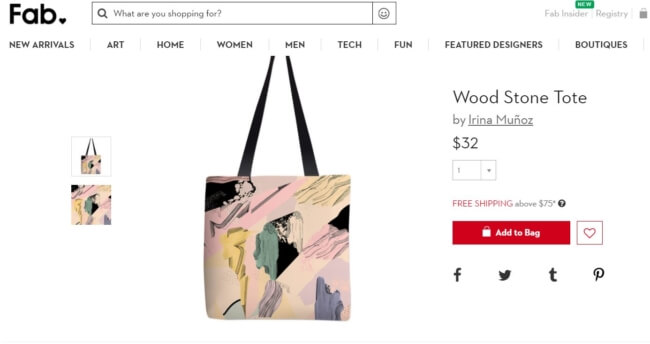
Again, social commerce emphasizes the concept of a conversation.
So ask yourself: what opportunity are you giving customers to spread the word about your products?
Integrating social media into your eCommerce site gives customers the chance to both share their purchases and show off their shopping carts. Something as simple as social buttons, such as those used by Fab, can help convert customers and provide your brand with even more visibility in the social sphere.
User Generated Content: Why integrate it into your website? Well, one of the reasons for doing so is that it encourages consumers to go on to share there own content featuring your products!
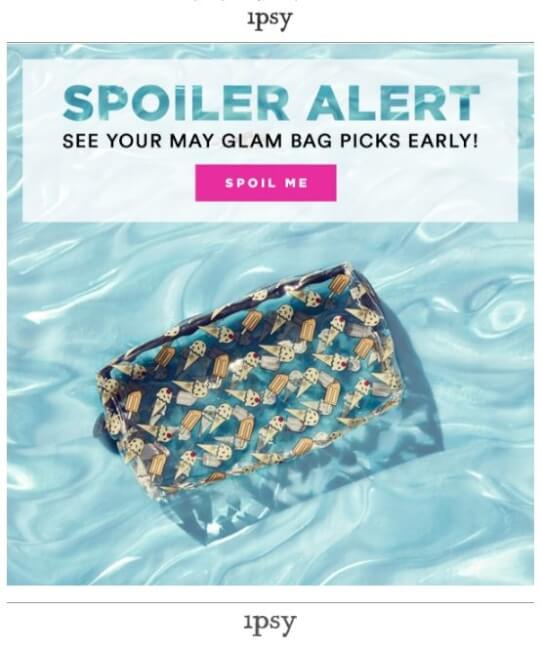
With well over 2 million Instagram followers, Ipsy has certainly mastered the art of social commerce.
A key takeaway from Ipsy’s viral glam bag success is their use of social media as an incentive for shoppers to share their content.
For example, Ipsy allows their subscribers a sneak peek at the contents of their glam bags before they arrive: all you have to do is share a link via Facebook Messenger to gain access.
This strategy allows Ipsy and its products to spread like wildfire, which is exactly why “tell a friend” marketing is becoming more and more common in the world of eCommerce.
Ipsy’s social commerce example demonstrates remarkable success in social commerce is attributed to leveraging social media as a tool for incentivizing customers to share content.
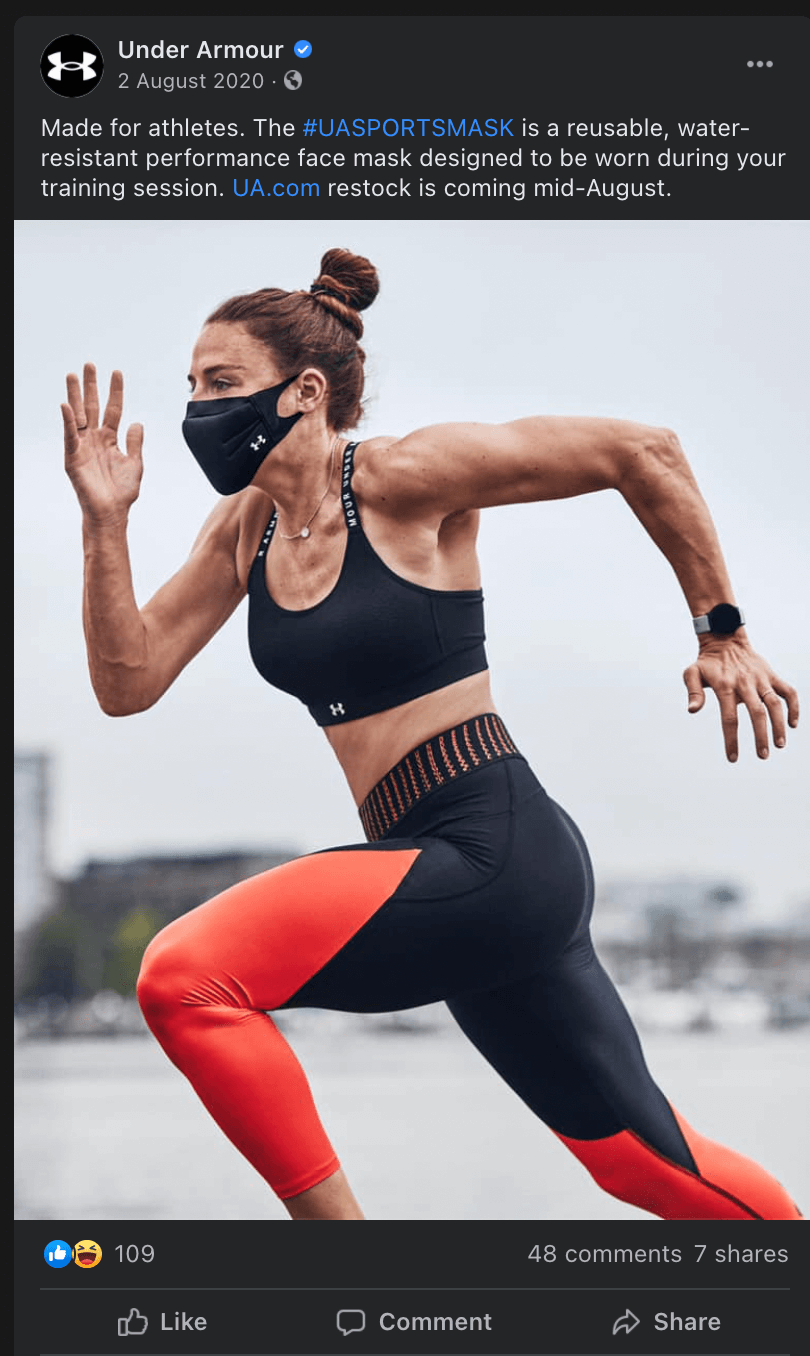
The common goal of anyone running social ads is simple: don’t let your ads look like, well, ads.
As a result, fashion brands often use user generated photos on Facebook to drive traffic to their stores. The industries of beauty and fashion have relatively high conversion rates via Facebook, which explains why so many brands are already on board.
Brands running Facebook ads should, therefore, consider a more subtle approach to their marketing messages which emphasizes UGC versus straight-up sales-based marketing.
For effective social advertising, brands should prioritize a subtle approach that utilizes UGC rather than overtly promotional messaging, particularly in industries like fashion and beauty with high conversion rates via platforms like Facebook.
That being said, don’t neglect the importance of serving up offers and deals.
Bear in mind that 63% of people follow brands on social media for the sake of coupons and discounts. Although there are dangers in running deals too often, throwing out a steep discount every now and then is a great strategy to catch your followers’ attention.
Offer something extra. While your social feed shouldn’t be 100% promotional, remember that deal-seekers deserve your attention too.
Contests and competitions certainly have their place in the social commerce sphere.
Simply put, contests encourage interaction with your social content and force followers to spend more time engaged with your brand.
The long-term value of contests depends on your goals. Are you trying to increase your number of followers? Gather email addresses? Drive traffic back to your store?
All of the above are totally effective uses of follower-based contests. As long as you’re seeing a ROI for the time spent conducting your contests, there’s no reason not to keep them rolling.
Engage with your customers competitive side. Make your interactions with consumers more memorable to achieve your goals.
Arguably the biggest mistake brands make when attempting to drive sales via social is not providing as many avenues to their products as possible.
For example, Instagram captions for eCommerce are often overlooked when it comes to encouraging purchases. Not only does Away regularly leverage branded hashtags, but also points followers directly to the link in their bio.
As noted with other major Instagram brands, every piece of your social presence must come together to encourage shoppers to check out what your storefront has to offer.
Don’t rely on just one avenue to drive customers to buying your products. Make use of all of your digital channels, especially social networks.

Luxury brands are hopping on the chatbot bandwagon to essentially serve as digital concierges to their customers. The concept of chatbots is relatively simple. Using a messenger app such as Facebook Messenger or Kik, brands can collect data from shoppers using an AI bot which provides personalized offers and recommendations in return.
While the technology is still emerging, brands such as Spring, Burberry and Sephora are already on board. AI is currently heralded as the future of eCommerce, it’ll be fascinating to see how much these bots are able to evolve within the next year or so.
Making things easy for your customers by utilizing chat bots can go a long way.
Now that you’ve enjoyed looking through our favourite social commerce examples. Effective social commerce is a combination of smart strategies versus a single, blanket approach. Based on the campaigns on today’s thriving social brands, the key takeaways for leveraging social media for sales include…
Whether through encouraging UGC or providing incentives for your followers to flock to your storefront, don’t forget the social component of eCommerce. Today’s shoppers have no qualms with engaging with sales-based social content, granted it’s relevant, personalized and one-of-a-kind.
Embarking on a social commerce strategy marks a significant step forward in modern business interaction. With the advent of social media, the landscape of consumer engagement has undergone a profound transformation, with social commerce emerging as its latest frontier. Equipped with essential knowledge above, you’re primed to take the next step. I
If you haven’t started selling via social, what’s holding you back? Interested in implementing some of these strategies but have no idea where to start? Check out our guide to Instagram marketing for more tips and tricks!